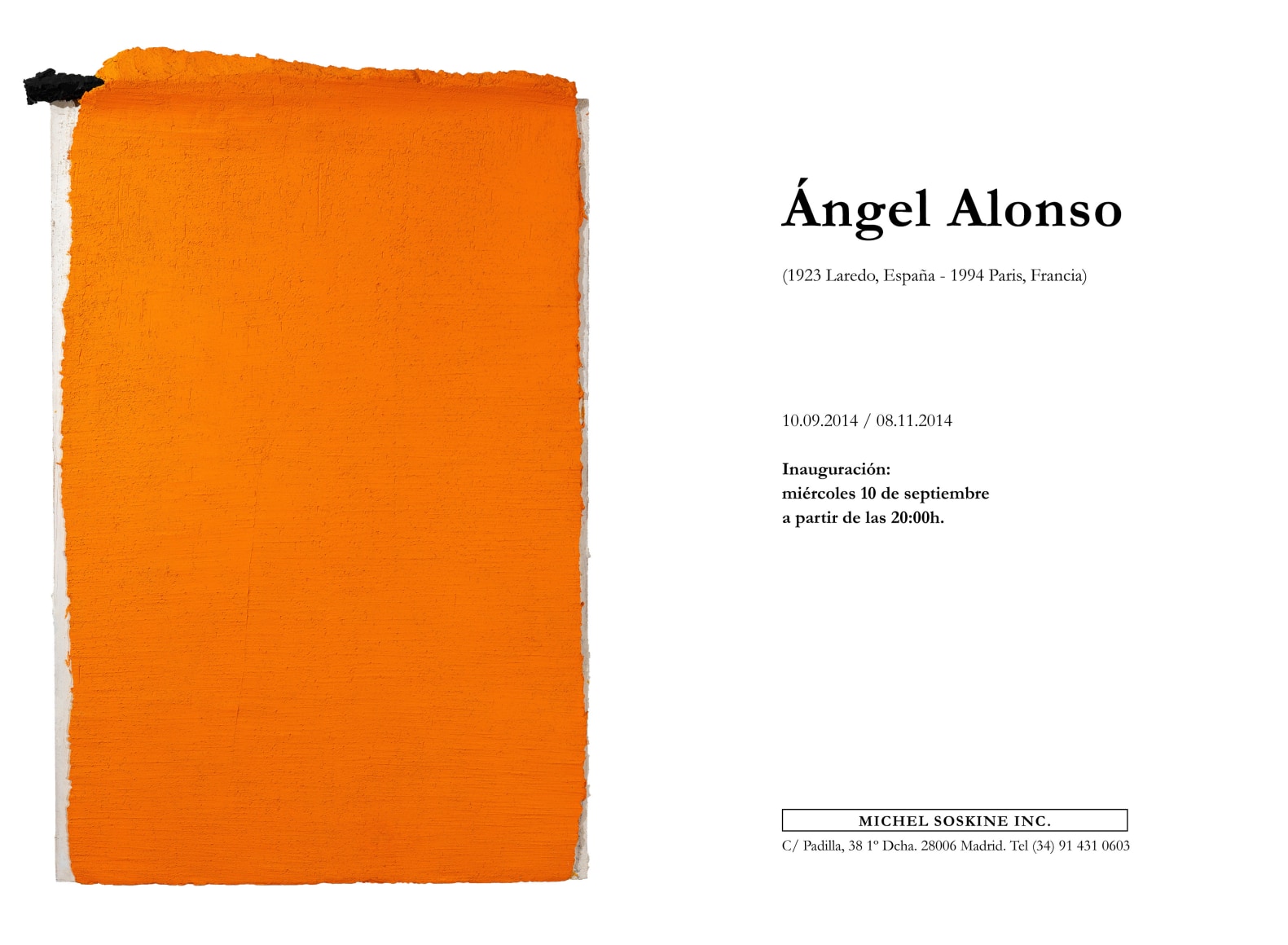Opening: September 10, 2014, from 8pm to 10pm.
Michel Soskine Inc. opens the season with the first major exhibition at a gallery in Spain by the painter Ángel Alonso.
Exiled in France since 1947, a man of strong character and overwhelming painting, inseparable friend of the well-known Spanish philosopher María Zambrano, Ángel Alonso has often been forgotten by the history of Spanish art. Twenty years after the artist's death in Paris, his work reappears in full force and radicalism.
Quoting the art historian Francisco Jarauta, "Alonso has mastered the materials and the technique developed by himself which embodied the colors that obsessed him."
The exhibition gathers a selection of works, especially from the 90s, a period in which the artist reaches its most refined style.
In his last years, after a period in which he mainly works with black and white - in series as Disasters, 1991 – he returns to color "achieving powerful paintings in green, yellow, orange and white " says the writer Juan Carlos Marset about Alonso’s work. Such are Jaune avec traces verte et jaune (yellow with green and yellow lines), 1993 or Enfance (Childhood), 1990, which can be seen in Madrid.
Ángel Alonso creates colors and works them through texture. “The colors are tenacious, they make you open your eyes wide”, said the painter. The tones exceed the limits of the canvas and mix with the materials, with soil, wood, stones and objects that the artist inserts into the works. "Color goes beyond the canvas, overflows the frame, deletes or ignores the format", explains Marset.
During Alonso’s last period, often through the small format paintings, "the texture is fully purified and the color layer becomes porous and subtle."The artist does not abandon his ongoing research on the materials and technique, searching for the essence of painting, as he did throughout his entire career. So, his last two series, one in black on wood and the other in black on white, represent for Marset "the conclusion of his work".
As a man of strong, temperamental and solitary character, he wanted to stay away from the art market and even declined to exhibit his works in the prestigious Parisian gallery Jeanne Bucher in 1952. His refusal kept him away from commercial venues and supported only by selected private collectors.

